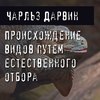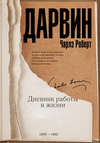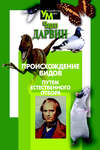Читать книгу: «More Letters of Charles Darwin — Volume 1», страница 33
There are great fears that Falconer will have to go out to India — this will be a grievous loss to Palaeontology.
LETTER 320. TO J.D. HOOKER. Down, April 10th {1846}.
I was much pleased to see and sign your certificate for the Geolog{ical Society}; we shall thus occasionally, I hope, meet. (320/1. Sir Joseph was elected a Fellow of the Geological Society in 1846.)
I have been an ungrateful dog not to have thanked you before this for the cake and books. The children and their betters pronounced the former excellent, and Annie wanted to know whether it was the gentleman "what played with us so." I wish we were at a more reasonable distance, that Emma and myself could have called on Lady Hooker with our congratulations on this occasion. It was very good of you to put in both numbers of the "Hort. Journal." I think Dean Herbert's article well worth reading. I have been so extravagant as to order M{oquin} Tandon (320/2. Probably "Elements de Teratologie Vegetale": Paris, 1841.), for though I have not found, as yet, anything particularly novel or striking, yet I found that I wished to score a good many passages so as to re-read them at some future time, and hence have ordered the book. Consequently I hope soon to send back your books. I have sent off the Ascension plants through Bunsen to Ehrenberg.
There was much in your last long letter which interested me much; and I am particularly glad that you are going to attend to polymorphism in our last and incorrect sense in your works; I see that it must be most difficult to take any sort of constant limit for the amount of possible variation. How heartily I do wish that all your works were out and complete; so that I could quietly think over them. I fear the Pacific Islands must be far distant in futurity. I fear, indeed, that Forbes is going rather too quickly ahead; but we shall soon see all his grounds, as I hear he is now correcting the press on this subject; he has plenty of people who attack him; I see Falconer never loses a chance, and it is wonderful how well Forbes stands it. What a very striking fact is the botanical relation between Africa and Java; as you now state it, I am pleased rather than disgusted, for it accords capitally with the distribution of the mammifers (320/3. See Wallace, "Geogr. Distribution," Volume I., page 263, on the "special Oriental or even Malayan element" in the West African mammals and birds.): only that I judge from your letters that the Cape differs even more markedly than I had thought, from the rest of Africa, and much more than the mammifers do. I am surprised to find how well mammifers and plants seem to accord in their general distribution. With respect to my strong objection to Aug. St. Hilaire's language on AFFAIBLISSEMENT (320/4. This refers to his "Lecons de Botanique (Morphologie Vegetale)," 1841. Saint-Hilaire often explains morphological differences as due to differences in vigour. See Letter 319.), it is perhaps hardly rational, and yet he confesses that some of the most vigorous plants in nature have some of their organs struck with this weakness — he does not pretend, of course, that they were ever otherwise in former generations — or that a more vigorously growing plant produces organs less weakened, and thus fails in producing its typical structure. In a plant in a state of nature, does cutting off the sap tend to produce flower-buds? I know it does in trees in orchards. Owen has been doing some grand work in the morphology of the vertebrata: your arm and hand are parts of your head, or rather the processes (i.e. modified ribs) of the occipital vertebra! He gave me a grand lecture on a cod's head. By the way, would it not strike you as monstrous, if in speaking of the minute and lessening jaws, palpi, etc., of an insect or crustacean, any one were to say they were produced by the affaiblissement of the less important but larger organs of locomotion. I see from your letter (though I do not suppose it is worth referring to the subject) that I could not have expressed what I meant when I allowed you to infer that Owen's rule of single organs being of a higher order than multiple organs applied only to locomotive, etc.; it applies to every the most important organ. I do not doubt that he would say the placentata having single wombs, whilst the marsupiata have double ones, is an instance of this law. I believe, however, in most instances where one organ, as a nervous centre or heart, takes the places of several, it rises in complexity; but it strikes me as really odd, seeing in this instance eminent botanists and zoologists starting from reverse grounds. Pray kindly bear in mind about impregnation in bud: I have never (for some years having been on the look-out) heard of an instance: I have long wished to know how it was in Subularia, or some such name, which grows on the bottom of Scotch lakes, and likewise in a grassy plant, which lives in brackish water, I quite forget name, near Thames; elder botanists doubted whether it was a Phanerogam. When we meet I will tell you why I doubt this bud-impregnation.
We are at present in a state of utmost confusion, as we have pulled all our offices down and are going to rebuild and alter them. I am personally in a state of utmost confusion also, for my cruel wife has persuaded me to leave off snuff for a month; and I am most lethargic, stupid, and melancholy in consequence.
Farewell, my dear Hooker. Ever yours.
LETTER 321. TO J.D. HOOKER. Down, April 19th {1855}.
Thank you for your list of R.S. candidates, which will be very useful to me.
I have thought a good deal about my salting experiments (321/1. For an account of Darwin's experiments on the effect of salt water on the germination of seeds, see "Life and Letters," II., page 54. In April he wrote to the "Gardeners' Chronicle" asking for information, and his results were published in the same journal, May 26th and November 24th, 1855; also in the "Linn. Soc. Journal," 1857.), and really think they are worth pursuing to a certain extent; but I hardly see the use (at least, the use equivalent to the enormous labour) of trying the experiment on the immense scale suggested by you. I should think a few seeds of the leading orders, or a few seeds of each of the classes mentioned by you, with albumen of different kinds would suffice to show the possibility of considerable sea-transportal. To tell whether any particular insular flora had thus been transported would require that each species should be examined. Will you look through these printed lists, and if you can, mark with red cross such as you would suggest? In truth, I fear I impose far more on your great kindness, my dear Hooker, than I have any claim; but you offered this, for I never thought of asking you for more than a suggestion. I do not think I could manage more than forty or fifty kinds at a time, for the water, I find, must be renewed every other day, as it gets to smell horribly: and I do not think your plan good of little packets of cambric, as this entangles so much air. I shall keep the great receptacle with salt water with the forty or fifty little bottles, partly open, immersed in it, in the cellar for uniform temperature. I must plant out of doors, as I have no greenhouse.
I told you I had inserted notice in the "Gardeners' Chronicle," and to-day I have heard from Berkeley that he has already sent an assortment of seeds to Margate for some friend to put in salt water; so I suppose he thinks the experiment worth trying, as he has thus so very promptly taken it into his own hands. (321/2. Rev. M.J. Berkeley published on the subject in the "Gardeners' Chronicle," September 1st, 1855.)
Reading this over, it sounds as if I were offended!!! which I need not say is not so. (321/3. Added afterwards between the lines.)
I may just mention that the seeds mentioned in my former note have all germinated after fourteen days' immersion, except the cabbages all dead, and the radishes have had their germination delayed and several I think dead; cress still all most vigorous. French spinach, oats, barley, canary-seed, borage, beet have germinated after seven days' immersion.
It is quite surprising that the radishes should have grown, for the salt water was putrid to an extent which I could not have thought credible had I not smelt it myself, as was the water with the cabbage-seed.
LETTER 322. TO J.D. HOOKER. Down, June 10th {1855}.
If being thoroughly interested with your letters makes me worthy of them, I am very worthy.
I have raised some seedling Sensitive Plants, but if you can READILY spare me a moderately sized plant, I shall be glad of it.
You encourage me so, that I will slowly go on salting seeds. I have not, I see, explained myself, to let you suppose that I objected to such cases as the former union of England and the Continent; I look at this case as proved by animals, etc., etc.; and, indeed, it would be an astounding fact if the land had kept so steady as that they had not been united, with Snowdon elevated 1,300 feet in recent times, etc., etc.
It is only against the former union with the oceanic volcanic islands that I am vehement. (322/1. See "Life and Letters," Volume II., pages 72, 74, 80, 109.) What a perplexing case New Zealand does seem: is not the absence of Leguminosae, etc., etc., FULLY as much opposed to continental connexion as to any other theory? What a curious fact you state about distribution and lowness going together.
The presence of a frog in New Zealand seems to me a strongish fact for continental connexion, for I assume that sea water would kill spawn, but I shall try. The spawn, I find, will live about ten days out of water, but I do not think it could possibly stick to a bird.
What you say about no one realising creation strikes me as very true; but I think and hope that there is nearly as much difference between trying to find out whether species of a genus have had a common ancestor and concerning oneself with the first origin of life, as between making out the laws of chemical attraction and the first origin of matter.
I thought that Gray's letter had come open to you, and that you had read it: you will see what I asked — viz., for habitats of the alpine plants, but I presume there will be nothing new to you. Please return both. How pleasantly Gray takes my request, and I think I shall have done a good turn if I make him write a paper on geographical distribution of plants of United States.
I have written him a very long letter, telling him some of the points about which I should feel curious. But on my life it is sublimely ridiculous, my making suggestions to such a man.
I cannot help thinking that what you say about low plants being widely distributed and standing injurious conditions better than higher ones (but is not this most difficult to show?) is equally favourable to sea-transport, to continental connexions, and all other means. Pray do not suppose that I fancy that if I could show that nearly all seeds could stand an almost indefinite period of immersion in sea-water, that I have done more than one EXTREMELY SMALL step in solving the problem of distribution, for I can quite appreciate the importance of the fact you point out; and then the directions of currents in past and present times have to be considered!!
I shall be very curious to hear Berkeley's results in the salting line.
With respect to geological changes, I ought to be one of the last men to undervalue them after my map of coral islands, and after what I have seen of elevation on coast of America. Farewell. I hope my letters do not bother you. Again, and for the last time, I say that I should be extremely vexed if ever you write to me against the grain or when tired.
LETTER 323. TO J.S HENSLOW. Down, July 2nd {1855}.
Very many thanks for all you have done, and so very kindly promise to do for me.
Will you make a present to each of the little girls (if not too big and grandiose) of six pence (for which I send stamps), who are going to collect seeds for me: viz., Lychnis, white, red, and flesh-colour (if such occur).
...Will you be so kind as to look at them before sent, just to see positively that they are correct, for remember how ignorant botanically I am.
Do you see the "Gardeners' Chronicle," and did you notice some little experiments of mine on salting seeds? Celery and onion seed have come up after eighty-five days' immersion in the salt water, which seems to me surprising, and I think throws some light on the wide dispersion of certain plants. Now, it has occurred to me that it would be an interesting way of testing the probability of sea-transportal of seeds, to make a list of all the European plants found in the Azores — a very oceanic archipelago — collect the seeds, and try if they would stand a pretty long immersion. Do you think the most able of your little girls would like to collect for me a packet of seeds of such Azorean plants as grow near Hitcham, I paying, say 3 pence for each packet: it would put a few shillings into their pockets, and would be an enormous advantage to me, for I grudge the time to collect the seeds, more especially as I have to learn the plants! The experiment seems to me worth trying: what do you think? Should you object offering for me this reward or payment to your little girls? You would have to select the most conscientious ones, that I might not get wrong seeds. I have just been comparing the lists, and I suspect you would not have very many of the Azorean plants. You have, however,
Ranunculus repens,
Ranunculus parviflorus,
Papaver rhoeas,?
Papaver dubium,?
Chelidonium majus,?
Fumaria officinalis.?
All these are Azorean plants.
With respect to cultivating plants, I mean to begin on very few, for I may find it too troublesome. I have already had for some months primroses and cowslips, strongly manured with guano, and with flowers picked off, and one cowslip made to grow in shade; and next spring I shall collect seed.
I think you have quite misunderstood me in regard to my object in getting you to mark in accompanying list with (x) all the "close species" (323/1. See Letter 279.) i.e., such as you do not think to be varieties, but which nevertheless are very closely allied; it has nothing whatever to do with their cultivation, but I cannot tell you {my} object, as it might unconsciously influence you in marking them. Will you draw your pencil right through all the names of those (few) species, of which you may know nothing. Afterwards, when done, I will tell you my object — not that it is worth telling, though I myself am very curious on the subject. I know and can perceive that the definition of "close species" is very vague, and therefore I should not care for the list being marked by any one, except by such as yourself.
Forgive this long letter. I thank you heartily for all your assistance.
My dear old Master, Yours affectionately, C. Darwin.
Perhaps 3 pence would be hardly enough, and if the number of kinds does not turn out very great it shall be 6 pence per packet.
LETTER 324. ASA GRAY TO CHARLES DARWIN.
(324/1. In reply to Darwin's letter, June 8th, 1855, given in "Life and Letters," II., page 61.)
Harvard University, Cambridge, U.S., June 30th, 1855.
Your long letter of the 8th inst. is full of interest to me, and I shall follow out your hints as far as I can. I rejoice in furnishing facts to others to work up in their bearing on general questions, and feel it the more my duty to do so inasmuch as from preoccupation of mind and time and want of experience I am unable to contribute direct original investigations of the sort to the advancement of science.
Your request at the close of your letter, which you have such needless hesitation in making, is just the sort of one which it is easy for me to reply to, as it lies directly in my way. It would probably pass out of my mind, however, at the time you propose, so I will attend to it at once, to fill up the intervals of time left me while attending to one or two pupils. So I take some unbound sheets of a copy of the "Manual," and mark off the "close species" by connecting them with a bracket.
Those thus connected, some of them, I should in revision unite under one, many more Dr. Hooker would unite, and for the rest it would not be extraordinary if, in any case, the discovery of intermediate forms compelled their union.
As I have noted on the blank page of the sheets I send you (through Sir William Hooker), I suppose that if we extended the area, say to that of our flora of North America, we should find that the proportion of "close species" to the whole flora increased considerably. But here I speak at a venture. Some day I will test it for a few families.
If you take for comparison with what I send you, the "British Flora," or Koch's "Flora Germanica," or Godron's "Flora of France," and mark the "close species" on the same principle, you will doubtless find a much greater number. Of course you will not infer from this that the two floras differ in this respect; since the difference is probably owing to the facts that (1) there have not been so many observers here bent upon detecting differences; and (2) our species, thanks mostly to Dr. Torrey and myself, have been more thoroughly castigated. What stands for one species in the "Manual" would figure in almost any European flora as two, three, or more, in a very considerable number of cases.
In boldly reducing nominal species J. Hooker is doing a good work; but his vocation — like that of any other reformer — exposes him to temptations and dangers.
Because you have shown that a and b are so connected by intermediate forms that we cannot do otherwise than regard them as variations of one species, we may not conclude that c and d, differing much in the same way and to the same degree, are of one species, before an equal amount of evidence is actually obtained. That is, when two sets of individuals exhibit any grave differences, the burden of proof of their common origin lies with the person who takes that view; and each case must be decided on its own evidence, and not on analogy, if our conclusions in this way are to be of real value. Of course we must often jump at conclusions from imperfect evidence. I should like to write an essay on species some day; but before I should have time to do it, in my plodding way, I hope you or Hooker will do it, and much better far. I am most glad to be in conference with Hooker and yourself on these matters, and I think we may, or rather you may, in a few years settle the question as to whether Agassiz's or Hooker's views are correct; they are certainly widely different.
Apropos to this, many thanks for the paper containing your experiments on seeds exposed to sea water. Why has nobody thought of trying the experiment before, instead of taking it for granted that salt water kills seeds? I shall have it nearly all reprinted in "Silliman's Journal" as a nut for Agassiz to crack.
LETTER 325. TO ASA GRAY. Down, May 2nd {1856?}
I have received your very kind note of April 8th. In truth it is preposterous in me to give you hints; but it will give me real pleasure to write to you just as I talk to Hooker, who says my questions are sometimes suggestive owing to my comparing the ranges, etc., in different kingdoms of Nature. I will make no further apologies about my presumption; but will just tell you (though I am certain there will be VERY little new in what I suggest and ask) the points on which I am very anxious to hear about. I forget whether you include Arctic America, but if so, for comparison with other parts of world, I would exclude the Arctic and Alpine-Arctic, as belonging to a quite distinct category. When excluding the naturalised, I think De Candolle must be right in advising the exclusion (giving list) of plants exclusively found in cultivated land, even when it is not known that they have been introduced by man. I would give list of temperate plants (if any) found in Eastern Asia, China, and Japan, and not elsewhere. Nothing would give me a better idea of the flora of United States than the proportion of its genera to all the genera which are confined to America; and the proportion of genera confined to America and Eastern Asia with Japan; the remaining genera would be common to America and Europe and the rest of world; I presume it would be impossible to show any especial affinity in genera, if ever so few, between America and Western Europe. America might be related to Eastern Asia (always excluding Arctic forms) by a genus having the same species confined to these two regions; or it might be related by the genus having different species, the genus itself not being found elsewhere. The relation of the genera (excluding identical species) seems to me a most important element in geographical distribution often ignored, and I presume of more difficult application in plants than in animals, owing to the wider ranges of plants; but I find in New Zealand (from Hooker) that the consideration of genera with representative species tells the story of relationship even plainer than the identity of the species with the different parts of the world. I should like to see the genera of the United States, say 500 (excluding Arctic and Alpine) divided into three classes, with the proportions given thus: —
100/500 American genera;
200/500 Old World genera, but not having any identical species in common;
200/500 Old World genera, but having some identical species in common;
Supposing that these 200 genera included 600 U.S. plants, then the 600 would be the denominator to the fraction of the species common to the Old World. But I am running on at a foolish length.
There is an interesting discussion in De Candolle (about pages 503-514) on the relation of the size of families to the average range of the individual species; I cannot but think, from some facts which I collected long before De Candolle appeared, that he is on wrong scent in having taken families (owing to their including too great a diversity in the constitution of the species), but that if he had taken genera, he would have found that the individual species in large genera range over a greater area than do the species in small genera: I think if you have materials that this would be well worth working out, for it is a very singular relation.
With respect to naturalised plants: are any social with you, which are not so in their parent country? I am surprised that the importance of this has not more struck De Candolle. Of these naturalised plants are any or many more variable in your opinion than the average of your United States plants? I am aware how very vague this must be; but De Candolle has stated that the naturalised plants do not present varieties; but being very variable and presenting distinct varieties seems to me rather a different case: if you would kindly take the trouble to answer this question I should be very much obliged, whether or no you will enter on such points in your essay.
With respect to such plants, which have their southern limits within your area, are the individuals ever or often stunted in their growth or unhealthy? I have in vain endeavoured to find any botanist who has observed this point; but I have seen some remarks by Barton on the trees in United States. Trees seem in this respect to behave rather differently from other plants.
It would be a very curious point, but I fear you would think it out of your essay, to compare the list of European plants in Tierra del Fuego (in Hooker) with those in North America; for, without multiple creation, I think we must admit that all now in T. del Fuego must have travelled through North America, and so far they do concern you.
The discussion on social plants (vague as the terms and facts are) in De Candolle strikes me as the best which I have ever seen: two points strike me as eminently remarkable in them; that they should ever be social close to their extreme limits; and secondly, that species having an extremely confined range, yet should be social where they do occur: I should be infinitely obliged for any cases either by letter or publicly on these heads, more especially in regard to a species remaining or ceasing to be social on the confines of its range.
There is one other point on which I individually should be extremely much obliged, if you could spare the time to think a little bit and inform me: viz., whether there are any cases of the same species being more variable in United States than in other countries in which it is found, or in different parts of the United States? Wahlenberg says generally that the same species in going south become more variable than in extreme north. Even still more am I anxious to know whether any of the genera, which have most of their species horribly variable (as Rubus or Hieracium are) in Europe, or other parts of the world, are less variable in the United States; or, the reverse case, whether you have any odious genera with you which are less odious in other countries? Any information on this head would be a real kindness to me.
I suppose your flora is too great; but a simple list in close columns in small type of all the species, genera, and families, each consecutively numbered, has always struck me as most useful; and Hooker regrets that he did not give such list in introduction to New Zealand and other Flora. I am sure I have given you a larger dose of questions than you bargained for, and I have kept my word and treated you just as I do Hooker. Nevertheless, if anything occurs to me during the next two months, I will write freely, believing that you will forgive me and not think me very presumptuous.
How well De Candolle shows the necessity of comparing nearly equal areas for proportion of families!
I have re-read this letter, and it is really not worth sending, except for my own sake. I see I forgot, in beginning, to state that it appeared to me that the six heads of your Essay included almost every point which could be desired, and therefore that I had little to say.
LETTER 326. TO J.D. HOOKER.
(326/1. On July 5th, 1856, Darwin wrote to Sir J.D. Hooker: —
"I am going mad and am in despair over your confounded Antarctic island flora. Will you read over the Tristan list, and see if my remarks on it are at all accurate. I cannot make out why you consider the vegetation so Fuegian.")
Down, 8th {July, 1856}.
I do hope that this note may arrive in time to save you trouble in one respect. I am perfectly ashamed of myself, for I find in introduction to Flora of Fuegia (326/2. "Flora Antarctica," page 216. "Though only 1,000 miles distant from the Cape of Good Hope, and 3,000 from the Strait of Magalhaens, the botany of this island {Tristan d'Acunha} is far more intimately allied to that of Fuegia than Africa." Hooker goes on to say that only Phylica and Pelargonium are Cape forms, while seven species, or one-quarter of the flora, "are either natives of Fuegia or typical of South American botany, and the ferns and Lycopodia exhibit a still stronger affinity.") a short discussion on Tristan plants, which though scored {i.e. marked in pencil} I had quite forgotten at the time, and had thought only of looking into introduction to New Zealand Flora. It was very stupid of me. In my sketch I am forced to pick out the most striking cases of species which favour the multiple creation doctrine, without indeed great continental extensions are admitted. Of the many wonderful cases in your books, the one which strikes me most is that list of species, which you made for me, common to New Zealand and America, and confined to southern hemisphere; and in this list those common to Chile and New Zealand seem to me the most wondrous. I have copied these out and enclosed them. Now I will promise to ask no more questions, if you will tell me a little about these. What I want to know is, whether any or many of them are mountain plants of Chile, so as to bring them in some degree (like the Chonos plants) under the same category with the Fuegian plants? I see that all the genera (Edwardsia even having Sandwich Island and Indian species) are wide-ranging genera, except Myosurus, which seems extra wonderful. Do any of these genera cling to seaside? Are the other species of these genera wide rangers? Do be a good Christian and not hate me.
I began last night to re-read your Galapagos paper, and to my taste it is quite admirable: I see in it some of the points which I thought best in A. De Candolle! Such is my memory.
Lyell will not express any opinion on continental extensions. (326/3. See Letters 47, 48.)
LETTER 327. TO C. LYELL. Down, July 8th {1856}.
Very many thanks for your two notes, and especially for Maury's map: also for books which you are going to lend me.
I am sorry you cannot give any verdict on continental extensions; and I infer that you think my argument of not much weight against such extensions; I know I wish I could believe. (327/1. This paragraph is published in the "Life and Letters," II., page 78; it refers to a letter (June 25th, 1856, "Life and Letters," II., page 74) giving Darwin's arguments against the doctrine of "Continental Extension." See Letters 47, 48.)
I have been having a look at Maury (which I once before looked at), and in respect to Madeira & Co. I must say, that the chart seems to me against land-extension explaining the introduction of organic beings. Madeira, the Canaries and Azores are so tied together, that I should have thought they ought to have been connected by some bank, if changes of level had been connected with their organic relation. The Azores ought, too, to have shown more connection with America. I had sometimes speculated whether icebergs could account for the greater number of European plants and their more northern character on the Azores, compared with Madeira; but it seems dangerous until boulders are found there. (327/2. See "Life and Letters," II., page 112, for a letter (April 26th, 1858) in which Darwin exults over the discovery of boulders on the Azores and the fulfilment of the prophecy, which he was characteristically half inclined to ascribe to Lyell.)
Покупайте книги и получайте бонусы в Литрес, Читай-городе и Буквоеде.
Участвовать в бонусной программе




















